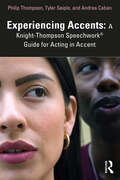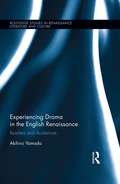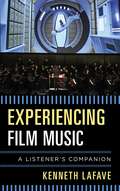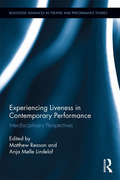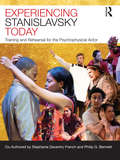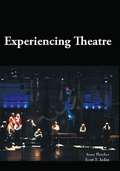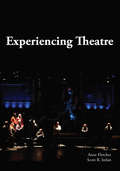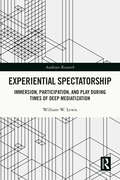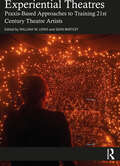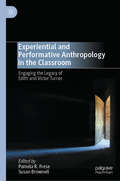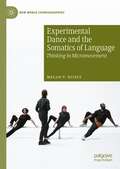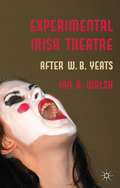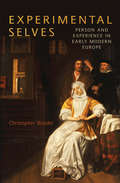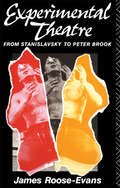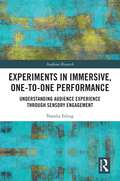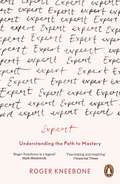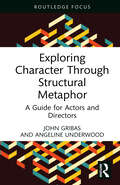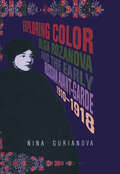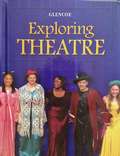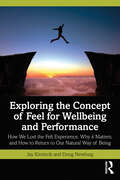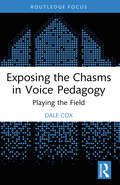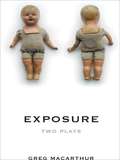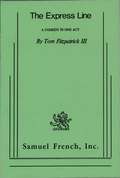- Table View
- List View
Experiencing Accents: A Knight-Thompson Speechwork® Guide for Acting in Accent
by Andrea Caban Philip Thompson Tyler SeipleExperiencing Accents: A Knight-Thompson Speechwork® Guide for Acting in Accent presents a comprehensive and systematic approach to accent acquisition for actors. It lays out an accessible and effective set of tools, exercises, and theoretical frameworks grounded in current linguistic science, as well as more than two decades of teaching, actor training, and coaching developed by Knight-Thompson Speechwork®. This book dismantles the notions that accents exist on a spectrum of good and bad or that "neutral," "general," or "standard" can serve as ideals for speech. By de-centering elitist and authoritarian worldviews, it gives actors a path to mobilize their innate language abilities to acquire any accent, relying on descriptive and experiential knowledge. The innovative approach of the Four Ps – People, Prosody, Posture, and Pronunciation – builds cultural competence that honors accents as they exist in the world, increases the physical and perceptive skills of the actor, and provides a rich variety of applications to encourage fluid and embodied accent performance. Each of the Four Ps are investigated and practiced separately and then synthesized in the art of the performer, allowing actors to address the complexity of acting in accent through a deliberate and sequential layering of skills, rendering the final expression of their technique meticulously accurate and deeply authentic. Organized into fifteen modules to correspond with a typical semester, Experiencing Accents is perfect for Theatre students in voice, speech, and accents courses, along with working actors interested in improving their accent work.
Experiencing Drama in the English Renaissance: Readers and Audiences (Routledge Studies in Renaissance Literature and Culture)
by Akihiro YamadaThis book investigates the complex interactions, through experiencing drama, of readers and audiences in the English Renaissance. Around 1500 an absolute majority of population was illiterate. Henry VIII’s religious reformation changed this cultural structure of society. ‘The Act for the Advancement of True Religion’ of 1543, which prohibited the people belonging to the lower classes of society as well as women from reading the Bible, rather suggests that there already existed a number of these folks actively engaged in reading. The Act did not ban the works of Chaucer and Gower and stories of men’s lives – good reading for them. The successive sovereigns’ educational policies also contributed to rising literacy. This trend was speeded up by London’s growing population which invited the rise of commercial playhouses since 1567. Every citizen saw on average about seven performances every year: that is, about three per cent of London’s population saw a performance a day. From 1586 onwards merchants’ appearance in best-seller literature began to increase while stage representation of reading/writing scenes also increased and stimulated audiences towards reading. This was spurred by standardisation of the printing format of playbooks in the early 1580s and play-minded readers went to playbooks, eventually to create a class of playbook readers. Late in the 1590s, at last, playbooks matched with prose writings in ratio to all publications. Parts I and II of this book discuss these topics in numerical terms as much as possible and Part III discusses some monumental characteristics of contemporary readers of Chapman, Ford, Marston and Shakespeare.
Experiencing Film Music: A Listener's Companion
by Kenneth LaFaveOf all the elements that combine to make movies, music sometimes seems the forgotten stepchild. Yet it is an integral part of the cinematic experience. Minimized as mere "background music," film scores enrich visuals with emotional mood and intensity, underscoring directors' intentions, enhancing audiences' reactions, driving the narrative forward, and sometimes even subverting all three. Trying to imagine The Godfather or Lawrence of Arabia with a different score is as difficult as imagining them featuring a different cast. In Experiencing Film Music: A Listener's Companion, Kenneth LaFave guides the reader through the history, ideas, personalities, and visions that have shaped the music we hear on the big screen. Looking back to the music improvised for early silent movies, LaFave traces the development of the film score from such early epic masterpieces as Max Steiner's work for Gone With the Wind, Bernard Herrmann's musical creations for Alfred Hitchcock's thrillers, Jerry Goldsmith's sonic presentation of Chinatown, and Ennio Morricone's distinctive rewrite of the Western genre, to John Williams' epoch-making Jaws and Star Wars. LaFave also brings readers into the present with looks at the work over the last decade and a half of Hans Zimmer, Alan Silvestre, Carter Brey, and Danny Elfman. Experiencing Film Music: A Listener's Companion opens the ears of film-goers to the nuance behind movie music, laying out in simple, non-technical language how composers and directors map what we hear to what we see--and, not uncommonly, back again.
Experiencing Liveness in Contemporary Performance: Interdisciplinary Perspectives (Routledge Advances in Theatre & Performance Studies)
by Matthew Reason Anja Mølle LindelofThis volume brings together dynamic perspectives on the concept of liveness in the performing arts, engaging with the live through the particular analytical focus of audiences and experience. The status and significance of the live in performance has become contested: perceived as variously as a marker of ontological difference, a promotional slogan, or a mystical evocation of cultural value. Moving beyond debates about the relationship between the live and the mediated, this collection considers what we can know and say about liveness in terms of processes of experiencing and processes of making. Drawing together contributions from theatre, music, dance, and performance art, it takes an interdisciplinary approach in asking not what liveness is, but how it matters and to whom. The book invites readers to consider how liveness is produced through processes of audiencing - as spectators bring qualities of (a)liveness into being through the nature of their attention - and how it becomes materialized in acts of performance, acts of making, acts of archiving, and acts of remembering. Theoretical chapters and practice-based reflections explore liveness, eventness and nowness as key concepts in a range of topics such as affect, documentation, embodiment, fandom, and temporality, showing how the relationship between audience and event is rarely singular and more often malleable and multiple. With its focus on experiencing liveness, this collection will be of interest to disciplines including performance, audience and cultural studies, visual arts, cinema, and sound technologies.
Experiencing Speech: A Beginner's Guide to Knight-Thompson Speechwork®
by Jeffrey Parker Andrea Caban Julie FohExperiencing Speech: A Skills-Based, Panlingual Approach to Actor Training is a beginner’s guide to Knight-Thompson Speechwork®, a method that focuses on universal and inclusive speech training for actors from all language, racial, cultural, and gender backgrounds and identities. This book provides a progression of playful, practical exercises designed to build a truly universal set of speech skills that any actor can use, such as the ability to identify, discern, and execute every sound found in every language on the planet. By observing different types of flow through the vocal tract, vocal tract anatomy, articulator actions, and how these components can be combined, readers will understand and recreate the process by which language is learned. They will then be introduced to the International Phonetic Alphabet (IPA) and will practice using the IPA for narrow transcription of speech sounds. The book also offers both an intellectual and physical understanding of oral posture and how it contributes to vocal characterization and accent work. This approach to speech training is descriptive, giving students a wide and diverse set of speech sounds and skills to utilize for any character in any project, and it establishes a foundation for future accent study and acquisition. Experiencing Speech: A Skills-Based, Panlingual Approach to Actor Training is an excellent resource for teachers and students of speech and actor training, as well as aspiring actors looking to diversify their speech skills.
Experiencing Stanislavsky Today: Training and Rehearsal for the Psychophysical Actor
by Stephanie Daventry French Philip G. BennettThis pioneering introduction to Stanislavsky's methods and modes of actor training covers all of the essential elements of his System. Recreating 'truthful' behaviour in the artificial environment, awareness and observation, psychophysical work, given circumstances, visualization and imagination, and active analysis are all introduced and explored. Each section of the book is accompanied by individual and group exercises, forming a full course of study in the foundations of modern acting. A glossary explains the key terms and concepts that are central to Stanislavsky's thinking at a glance. The book's companion website is full of downloadable worksheets and resources for teachers and students. Experiencing Stanislavsky Today is enhanced by contemporary findings in psychology, neuroscience, anatomy and physiology that illuminate the human processes important to actors, such as voice and speech, creativity, mind-body connection, the process and the production of emotions on cue. It is the definitive first step for anyone encountering Stanislavsky's work, from acting students exploring his methods for the first time, to directors looking for effective rehearsal tools and teachers mapping out degree classes.
Experiencing Theatre
by Anne Fletcher Scott R. Irelan"Experiencing Theatre completely engages the beginning theatre student in the art of theatre. Students become playwrights, dramaturges, actors, directors, designers, adapters and collaborators though dynamic readings and excercises. This text gives them a great awareness of the work of being a theatre artist. Teachers have long strived towards creating these opportunities for their Intro students--finally a text that will make it happen." --Barbara Burgess-Lefebvre, Robert Morris University
Experiencing Theatre
by Anne Fletcher Scott R. Irelan"Experiencing Theatre completely engages the beginning theatre student in the art of theatre. Students become playwrights, dramaturges, actors, directors, designers, adapters and collaborators though dynamic readings and excercises. This text gives them a great awareness of the work of being a theatre artist. Teachers have long strived towards creating these opportunities for their Intro students--finally a text that will make it happen." --Barbara Burgess-Lefebvre, Robert Morris University
Experiential Spectatorship: Immersion, Participation, and Play During Times of Deep Mediatization (Audience Research)
by William W. LewisExperiential Spectatorship offers a lens for analyzing audience experience with(in) a variety of contemporary media. Using a broad-based perspective, this media includes participatory theatre, video games, digital simulations, social media platforms, alternate reality games, choose your own adventure narratives, interactive television, and a variety of other experiential performance events. Through a taxonomy that includes Immersion, Participation, Game Play, and Role Play the book guides the reader to understand the ways mediatization and technics brought about by digital technologies are changing the capacities and expectations of contemporary audiences. In their daily interactions and relations with their technologies, they become mediatized spectators. By reading these technologies' impacts on individual subjectivity prior to acts of spectatorship, one gains the tools to best describe how the spectator creates forms of relational exchange with their experential media.This book prepares the reader to think in a digital manner so they can best recognize how performance and spectatorship in the twenty-first century are evolving to meet the needs of future waves of spectators brought up in a postdigital world.
Experiential Theatres: Praxis-Based Approaches to Training 21st Century Theatre Artists
by William W. Lewis Sean BartleyExperiential Theatres is a collaboratively edited and curated collection that delivers key insights into the processes of developing experiential performance projects and the pedagogies behind training theatre artists of the twenty-first century. Experiential refers to practices where the audience member becomes a crucial member of the performance world through the inclusion of immersion, participation, and play. As technologies of communication and interactivity have evolved in the postdigital era, so have modes of spectatorship and performance frameworks. This book provides readers with pedagogical tools for experiential theatre making that address these shifts in contemporary performance and audience expectations. Through case studies, interviews, and classroom applications the book offers a synthesis of theory, practical application, pedagogical tools, and practitioner guidance to develop a praxis-based model for university theatre educators training today’s theatre students. Experiential Theatres presents a holistic approach for educators and students in areas of performance, design, technology, dramaturgy, and theory to help guide them through the processes of making experiential performance.
Experiential and Performative Anthropology in the Classroom: Engaging the Legacy of Edith and Victor Turner
by Susan Brownell Pamela R. FreseThe contributors gathered here revitalize “ethnographic performance”—the performed recreation of ethnographic subject matter pioneered by Victor and Edith Turner and Richard Schechner—as a progressive pedagogy for the 21st century. They draw on their experiences in utilizing performances in a classroom setting to facilitate learning about the diversity of culture and ways of being in the world. The editors, themselves both students of Turner at the University of Virginia, and Richard Schechner share recollections of the Turners’ vision and set forth a humanistic pedagogical agenda for the future. A detailed appendix provides an implementation plan for ethnographic performances in the classroom.
Experimental Dance and the Somatics of Language: Thinking in Micromovement (New World Choreographies)
by Megan V. NicelyThis book is about dance’s relationship to language. It investigates how dance bodies work with the micromovements elicited by language’s affective forces, and the micropolitics of the thought-sensations that arise when movement and words accompany one another within choreographic contexts. Situating itself where theory meets practice—the zone where ideas arise to be tested, the book draws on embodied research in practices within the lineages of American postmodern dance and Japanese butoh, set in dialog with affect-based philosophies and somatics. Understanding that language is felt, both when uttered and when unspoken, this book speaks to the choreographic thinking that takes place when language is considered a primary element in creating the sensorium.
Experimental Irish Theatre
by Ian R. WalshThis book examines experimental Irish theatre that ran counter to the naturalistic 'peasant' drama that became synonymous with Irish playwriting. Focusing on four marginalised playwrights who premiered works after the death of W. B. Yeats, it charts an alternative tradition linking the experimentations of the early Irish theatre movement with the innovations of contemporary Irish and international drama. Drawing on archival material never before published this study rediscovers the vibrant and dissenting smaller theatre companies and playwrights of a forgotten era in Irish theatre. In its concentration on the margins and its emphasis on the performative rather than literary affects of the plays, this book offers a fresh alternative telling of the Irish theatrical story, important works are recovered and the breadth of the Irish canon is widened. This book will prove attractive and satisfying to students, theatregoers, and readers of theatre history, performance studies, modernism, and Irish studies.
Experimental Selves: Person and Experience in Early Modern Europe
by Christopher BraiderDrawing on the generous semantic range the term enjoyed in early modern usage, Experimental Selves argues that ‘person,’ as early moderns understood this concept, was an ‘experimental’ phenomenon—at once a given of experience and the self-conscious arena of that experience. Person so conceived was discovered to be a four-dimensional creature: a composite of mind or 'inner' personality; of the body and outward appearance; of social relationship; and of time. Through a series of case studies keyed to a wide variety of social and cultural contexts, including theatre, the early novel, the art of portraiture, pictorial experiments in vision and perception, theory of knowledge, and the new experimental science of the late-seventeenth and eighteenth centuries, the book examines the manifold shapes person assumed as an expression of the social, natural, and aesthetic ‘experiments’ or experiences to which it found itself subjected as a function of the mere contingent fact of just having them.
Experimental Theatre: From Stanislavsky to Peter Brook
by James Roose-Evans`It is a pleasure to read. Well-written, free of cant, impressively wide-ranging. The book is really an introduction to the avant-garde.' - John Lahr
Experimentos com Ratos
by Antonio Morcillo LopezO mundo se tornou uma merda de aeroporto internacional. Pol Pot, Idi AMin, Saddam Husseim e Stalin são um grupo de ratos presos numa caixa transparente. Eles são veteranos de experimentos científicos. Já o viram em todas as cores. Para eles, eventualmente, descargas elétricas se transformaram numa espécie de deidade desconhecida. Eles não sabem muito bem como interpretar o que significa tanta dor. Um dia, uma seção particularmente intensa acabou com eles. Morreram. Isso os permitiu passar para o outro lado e visitar o cientista que estava experimentado com eles todo esse tempo. Eles tem algumas questões à fazer. E querem muitas respostas. Sociedade Hispânica de Autores e Editores (SGAE) Prêmio de Teatro 2007.
Experiments in Immersive, One-to-One Performance: Understanding Audience Experience through Sensory Engagement (Audience Research)
by Natalia EslingThis book investigates audience experience through the lens of sensory engagement in immersive, one-to-one performance. It presents a distinct, practice-based research (PBR) framework – a performance research ‘laboratory’ – designed to evaluate the effects on diverse audience experiences of two ‘sense-specific manipulations’: eye masks and touch. Through a qualitative analysis of responses from seventy-four individual audience participants, this book offers insight into how these popular ‘immersing’ strategies might be experienced. What do these strategies achieve? How do audience participants make sense of them? Do audience responses align with artistic intentions? And how does the PBR framework designed to address these questions influence the outcomes? Through an analysis of three sets of one-to-one performance experiments generating comparative data about the experience of sense-specific manipulation, this book proposes the utility of merging methodologies in artistic research with empirical audience research in theatre and performance studies. This study offers a new perspective on the value of sensory-focused, immersive, one-to-one experience as a means of resensitizing audience participants through performance.
Expert: Understanding the Path to Mastery
by Roger Kneebone'Roger Kneebone is a legend' Mark Miodownik, author of Stuff Matters'Fascinating and inspiring' Financial Times'The pandemic has made the necessity of relying on experts evident to all . . . this is a rich exploration of lifelong learning' GuardianWhat could a lacemaker have in common with vascular surgeons? A Savile Row tailor with molecular scientists? A fighter pilot with jazz musicians? At first glance, very little. But Roger Kneebone is the expert on experts, having spent a lifetime finding the connections.In Expert, he combines his own experiences as a doctor with insights from extraordinary people and cutting-edge research to map out the path we're all following - from 'doing time' as an Apprentice, to developing your 'voice' and taking on responsibility as a Journeyman, to finally becoming a Master and passing on your skills. As Kneebone shows, although each outcome is different, the journey is always the same. Whether you're developing a new career, studying a language, learning a musical instrument or simply becoming the person you want to be, this ground-breaking book reveals the path to mastery.
Exploring Character Through Structural Metaphor: A Guide for Actors and Directors (ISSN)
by John Gribas Angeline UnderwoodExploring Character Through Structural Metaphor will help performers discover new and valuable insights into the characters they play. Grounded in a contemporary approach to understanding and applying the power of metaphor, it offers a practical guide for both actors and directors. This book introduces the idea of metaphor as a way of thinking rather than simply as clever comparison or figurative language. It demonstrates limitations of ways metaphor has traditionally been used in character development and presents a method for applying structural metaphor to discover rich, in-depth character insights. For directors, the model can serve as an option for guiding character analysis that is less individualistic and actor-specific and more wholistic and cast-inclusive, promoting stronger overall performance unity and production cohesion. In addition to offering a clear, followable guide for character analysis, the authors draw on personal experience to vividly demonstrate how applying this method for character analysis could impact performance and production. This book will be a useful addition to an actor’s or director’s set of character development resources.
Exploring Color: Olga Rozanova and the Early Russian Avant-Garde 1910-1918
by Nina GurianovaThis is an examination of the paintings, books, poetry and theoretical work of Russian avant-garde artist, Olga Rozanova. The text assesses Rozanova's life and work, aiming to recreate the spirit of the counterculture milieu that contributed to the transformation of 20th-century art.
Exploring Theatre (Ntc: Exploring Theatre Ser.)
by Jeanie Jackson Nancy Olive PrinceNIMAC-sourced textbook
Exploring the Concept of Feel for Wellbeing and Performance: How We Lost the Felt Experience, Why it Matters, and How to Return to Our Natural Way of Being
by Jay Kimiecik Doug NewburgThis book analyses and unpacks the term Feel by exploring its many definitions and examples in real life. Incorporating psychological theories and case studies, it offers a groundbreaking look into what it means to Feel and its importance in people’s everyday lives. Experiencing life without Feel has led to many deleterious performance, health, and wellbeing consequences. Exploring the Concept of Feel for Wellbeing and Performance takes a deep dive into the origins and definitions of Feel, asking what has happened to the Feel experience, and what people must do to recoup their Feel. With a highly accessible tone and clear structure, the book provides its readers with effective ways to improve performance and enhance wellbeing. The authors challenge the status quo of both performance science and wellbeing practices and begin a conversation on why people should be more proactive when it comes to their Feel. Anyone interested in helping themselves or others with performance excellence and wellbeing will benefit from this book, which blends science and practice and provides many examples of people from all walks of life who live with Feel. The book will also be key reading for students and practitioners interested in sport psychology, leadership studies, mental health studies counselling, and life coaching.
Exposing the Chasms in Voice Pedagogy: Playing the Field
by Dale CoxThis concise book critically examines the intersection of power, privilege, and classical music in higher education through an extensive study of the experiences, training, and background of teachers of musical theatre singing.Mapping the divides within the voice pedagogy field, it shows how despite the growth of non-classical programmes, the teaching of vocal music in the United States continues to be structurally dominated by Western classical music. Drawing on extensive fieldwork and observations of practicing instructors, the author argues that current voice pedagogy training’s classical-centred approach fails to prepare instructors to teach the range of vocal styles needed in the contemporary musical theatre profession. Combining a critical review of existing practices with proposals for change, this book sheds light on a key problem in voice pedagogy today.Based on field research and drawing on both Shulman’s signature pedagogies theory and Bourdieu’s concepts of habitus, capitals, practice, and field, this book will be useful for scholars, researchers, and practitioners of voice pedagogy, higher music education, performance education, cultural studies, music, musical theatre, and theatre studies.
Exposure: Two Plays
by Greg MacarthurExpose yourself to one of the most original new voices in theatre with this collection of two uncompromising plays by Greg MacArthur.'Snowman': After years of wandering, Denver and Marjorie find themselves in a remote northern community at the edge of a glacier, chopping wood, renting out stolen videos and doing cocaine with Jude, a young gay man whose parents have abandoned him. When Jude discovers the body of a prehistoric boy frozen in the glacier, everyone finds their lives beginning to shift and thaw in unexpected ways.'girls! girls! girls!': Splitz deserved to win. Missy stole first place. Set in the cutthroat world of high school gymnastics, this play follows the Friday-night exploits of four teenage chums as they seek revenge for a loss on the vaulting horse. Told in a hypnotic, rap-meets-nursery-rhymes style, this play, which takes its cue from A Clockwork Orange and the Columbine massacre, is brutally violent as it explores what happens when emptiness becomes the norm.Exposure includes an introduction by Peter Hinton.
Express Line
by Tom Fitzpatrick IIIComedy / 9m, 2f, extras / A supermarket customer in the express line has two more items than allowed. Despite his pleas, the checker adamantly refuses to serve him. The insistent customer ignores his embarrassed wife and the growing anger of a laborer behind him. When the manager fails to back the checker, other employees threaten to walk out. The situation is finally resolved by a policeman with common sense.
